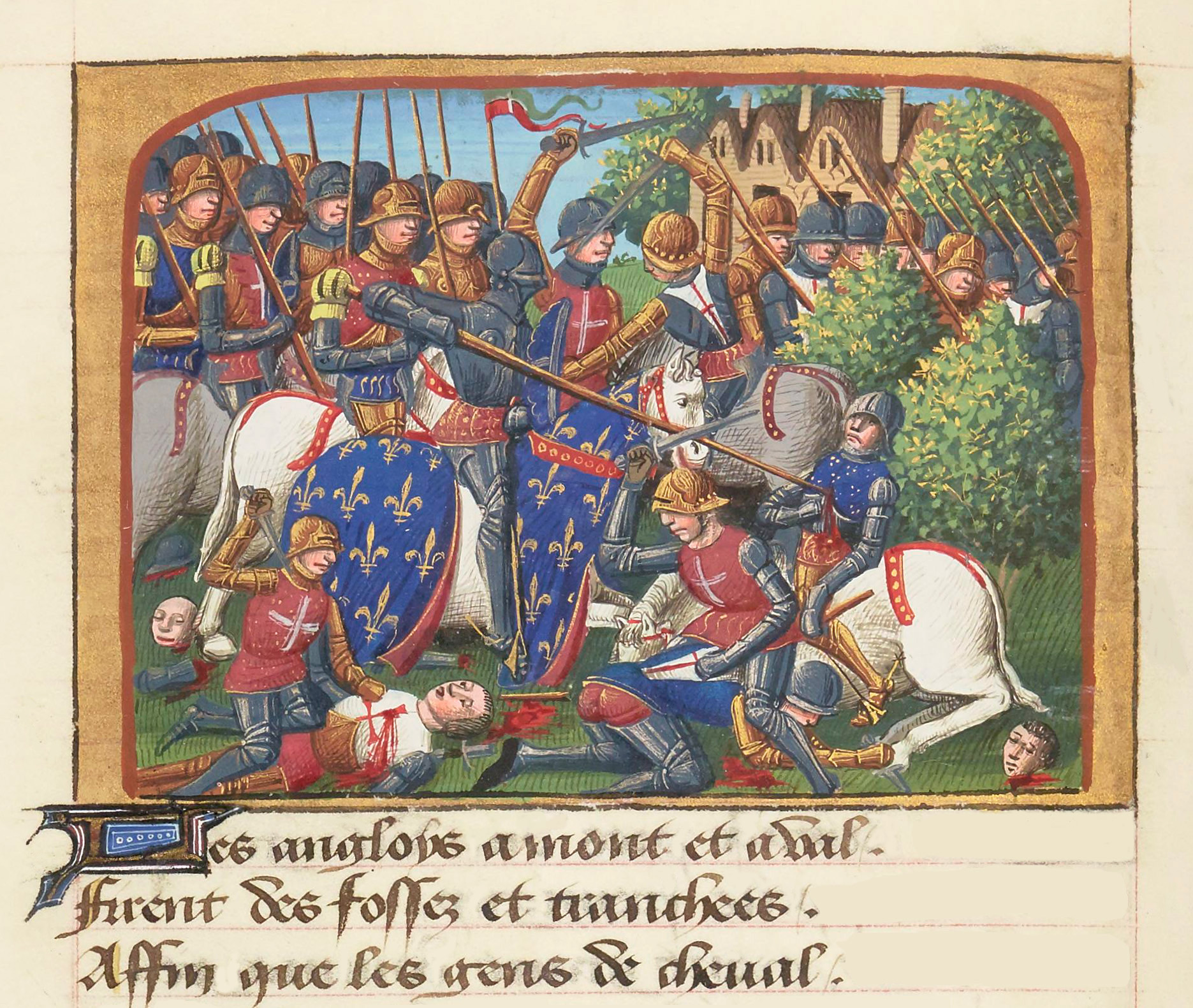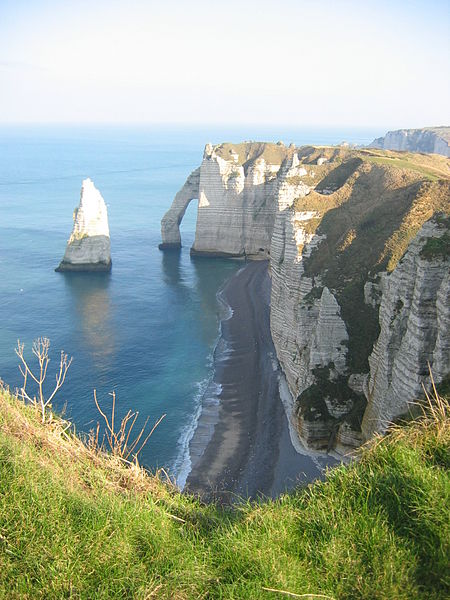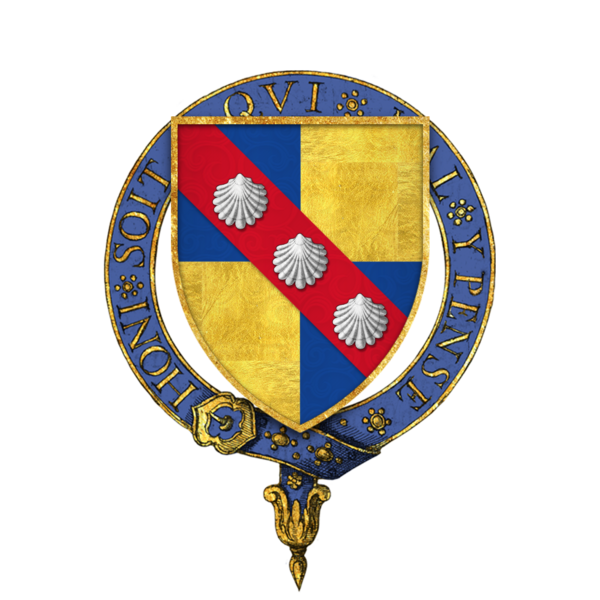 |
| Battle of Formigny |
The End of a Dream
In 1448
Fastolf advised Edmund Beaufort[i] to protect the coasts of English
France;
‘Item, that of the ports of
the sea there, as Harfleur, Honfleur, Le Crotoy,
Cherbourg, and others, being in our obedience, be purveyed a navy of ships to
help resist against your enemies when it shall need………..the sea be well kept
because of conveying of victuals, and for coming over the sea of soldiers when
it shall be necessary.’[ii]
As so
frequently before, the government saw fit to ignore Fastolf’s wise advice,
possibly financial considerations played a part in this decision; the upkeep of
a navy would be a drain on the nation’s coffers.
The 11th
April of 1450 saw the Battle of Formigny; a decisive victory for the French. Fastolf, although
he was not present, later criticised the army’s commander Thomas Kyriell in a
memorandum submitted to the great council in his role as their special adviser,
writing of Kyriell as
‘Negligently tarrying in
Normandy, and sped him not to go spedly to [Somerset].’[iii]
 |
| Chateau de Vire |
Fastolf set
about raising another army but the French turned south to Vire and captured it and the commander Lord Scales in a six day siege.
Avranches followed not long after and that the French besieged Caen, which held
the majority of the remnants of the English army and its leader the Duke of
Somerset. The Bastard of Orléans took only seventeen days to bring about the
defeat of the besieged forces and Charles VII made his triumphal entry into the
town on 6th July 1450.
These
calamities meant that Fastolf’s army was not required. Further victories at
Falaise and Cherbourg resulted finally on 11th August English rule
in northern France coming to an end. Seven days later John Paston’s servant
wrote;
‘This morning it was told
that Shirburgh is goon, and we have not now a foote of lande in Normandie.’[iv]
Keeping the Peace
In the June of
1450, as if the troubles abroad were not enough, one Jack Cade and his supporters, assembled on Blackheath, called for Henry to abdicate or for his advisers to be
replaced with more competent men. The coastal regions of England were now
subject to harrying by the French and little seemed to be done by the
authorities to deal with the troubles of the common man.
Fastolf. was
seventy years old and seemed to be keeping his wits about him. He sent one of
his servants, John Payn, to get hold of Cade’s demands;
‘To take a man and .ii. of
the best horse that were in his stabyll with him and ride to the commons of
Kent to get the articles that they came for……I get th’ articles[v]
and brought them to my maister.’[vi]
Once they
reached London Cade’s control of his supporters failed and the rebels attempted
to loot the city, despite having undertaken to commit no acts of lawlessness.
The Londoners fought back on London bridge; ousting the rebels. To obtain a
peaceful end to the rebellion Henry VI issued Cade and his men with pardons and
they disbursed. Cade himself was captured on his return journey on 12th
July by one Alexander Iden;[vii] he died in the skirmish.
Involvement in a Family Dispute
.jpg/469px-King_Henry_VI_from_NPG_(2).jpg) |
| Henry VI |
In 1454 Fastolf
was caught up in in-fighting between the Duke of York and the king. The
disagreement between the two was first made public in February 1452, when York
tried to ‘bully’ the king with an ‘armed demonstration’ at Dartford in Kent. Henry had his uncle arrested and he was forced to swear never
to rebel again.
On 19th
August 1452 Fastolf made his will and transferred control over all his lands to
his trustees in expectation of a long voyage that never took place, possibly
planning to pledge his loyalty to Henry. Henry was touring the west country at
the time and suppressing dissent. In December Fastolf loaned York monies[viii], secured by jewellery
left in Fastolf’s possession. There were further loans.
In 1453 parliament
was called at Reading and one Robert Collinson alleged that Fastolf and Lord Grey of Ruthin had been involved in organising
York’s demonstration of armed force at Deptford. The two men were summonsed to
appear and on 6th September 1453 Fastolf was required to put up the
sum of £1,000[ix]
in recognisance for good behaviour. The obligation was later cancelled;
‘For that [Fastolf] did so
appear before the lords of the council on 6th November……..and made
his excuse, wherefore he was by them reckoned as excused, and dismissed from
further appearance.’[x]
The first
real fighting of the Wars of the Roses took place on the streets of St Albans on 22nd May 1455; amongst
others the dead included the Duke of Somerset. This first battle of St Albans
was effectively a Yorkist victory and it benefitted Fastolf indirectly.
Old Age
.jpg/618px-Plan_of_Caister_Castle_(1897).jpg) |
| Plan of Caister |
Fastolf was
becoming concerned about the management of his properties, writing in 1450 to
his agent Thomas Howes[xi];
‘I hear oftimes many strange
reports of the governance of my place at Caister and other places, as in making
profit from my chattels, my wines, the keeping of my wardrobe and clothes, my
coneys at Hellesdon[xii] and
in my lands……..that you suffer no vicious man to abide at my place of Caister
but only well governed and diligent.’[xiii]
Paston and
Thomas Howes obtained the wardship of Thomas Fastolf, a young relative of
Fastolf’s. Thomas was the son of John Fastolf of Nacton. This wardship was to cause dissension between Fastolf and the Duke of Suffolk[xiv]. Suffolk’s associates Philip Wentworth
and John Andrew disputed the wardship, which did not reach a successful
conclusion until after the battle at St Albans.
 |
| Arms of the Duke of Suffolk |
Suffolk
carried on a war with the Paston’s and Fastolf, who in 1450 wrote;
‘I often suffered damage at
the hands of the Duke of Suffolk’s officers in Lothingland[xv],
on account of their great exorbitant extractions, in the distraining of my
belongings and in other ways.’[xvi]
Suffolk’s
reign of power ended in abruptly in January 1450[xvii] when he was arrested
for high treason, impeached and banished. Suffolk was murdered by the crew of
the ship taking him to France.
It was not until 1454 that Fastolf moved to
live in Caister permanently. It had cost £6,000[xviii] to build. In 1456, now
well ensconced with the ageing soldier, John Paston was appointed one of the
feoffees of Fastolf's lands. Paston was Fastolf’s most trusted councillor and
man of business. Paston also made friends with Fastolf’s secretary Worcester.
Death of a Benefactor
%2C_f.231v_-_BL_Add_MS_24945.jpg/566px-Ship_with_armed_soldiers_-_De_re_militari_(15th_C)%2C_f.231v_-_BL_Add_MS_24945.jpg) |
| Illustration from De re militari |
In June 1459
Fastolf made a will which provided that his ten executors found a college in
Caister. Fastolf spent much of his later years planning a chantry college. He was also a collector of books; he is known to have brought
home at least one from France; the
Epistle of Othea by Christine Pisan.
By the time
he died Fastolf owned at least twenty-five books, many of which were on the
subject of war; a life of Julius Caesar, Livy’s histories of Rome,
a volume of Josephus, and the De re militari by Vegetius. He also possessed a scientific
encyclopaedia by Bartholomew the Englishman, a medical treatise by Aldobrandinus
of Siena, along with religious works and volumes of Cicero, Aristotle and Justinian’s Institutes and a book on gardening by Pietro de’ Crescenzi.
Fastolf also
commissioned books; he had Stephen Scrope translate the Epistle of Othea around 1440. In his introduction Scrope extolled
the virtues of the Duc
de Berri and the actions of Fastolf in France;
‘And God, who is sovereign
chieftain and knight of all chivalry, has ever preserved and defended you in
all your said labours of chivalry to this day.’[xix]
Fastolf died
on 5 November 1459 after 158 days of ‘hectic
fever’ and he was buried next to his wife Millicent in St Benet's Abbey in a specially built aisle on the
South side of the abbey church, which fell into ruins after the dissolution of the monasteries.
 |
| Magdalen College |
After
Fastolf’s death John Paston claimed that Fastolf had made a nuncupative will on 3rd November,
giving Paston exclusive authority over the foundation of the college[xx]. The will provided for, after payment of 4000 marks,
Paston was to have all Fastolf's lands in Norfolk and Suffolk. The Paston
family moved quickly; John Paston’s brother William, a lawyer[xxi], wrote to John on 12th
November;
‘On Friday last in the
morning Worcester and I had come to London……….I spoke to the Lord Chancellor
and I found him well disposed in all things and you will find him right
profitable to you etc…….He desired me to write you a letter in his name and to
entrust you to gather the goods together……….and have all his [Fastolf’s] out of
every place of his….and lay them secretly where you thought them best at your
choice.’[xxii]
Relying on
the November will and the Lord Chancellor’s goodwill Paston took possession of
the Fastolf estates and resided at times at Fastolf's manors of Caister[xxiii] and Hellesdon. The
bulk of Fastolf's fortune passed to Magdalen College, Oxford.
Bibliography
The Hundred
Years War – Alfred H Burne, Folio Society 2005
The Real
Falstaff – Stephen Cooper, Pen & Sword Military 2010
The Reign of
King Henry VI – RA Griffiths, Sutton Publishing 1998
The
Fifteenth Century – EF Jacob, Oxford University Press 1997
John Talbot
& the War in France – AJ Pollard, Pen & Sword Military 2005
www.wikipedia.en
[i]
Third son of John Beaufort and now Duke of Somerset in his father’s stead
[ii]
The Real Falstaff - Cooper
[iii]
The Hundred Years War - Burne
[iv]
Ibid
[v]
Now in the archives of Magdalen College, Oxford
[vi]
The Reign of Henry VI - Griffiths
[viii]
Most of the nobility were land rich and cash poor
[ix]
In 2013 the relative: historic standard of
living value of that income or
wealth is £690,600.00
economic
status value of that income or
wealth is £20,950,000.00 economic power value
of that income or wealth is £342,100,000.00 www.measuringworth.com
[x]
The Real Falstaff - Cooper
[xi]
William Worcester’s uncle by marriage
[xii]
Now a suburb of Norwich; Fastolf’s death led to a fight between his relatives,
the Paston’s and the Duke of Suffolk
[xiii]
Illustrated Letters of the Paston Family – Virgoe (ed)
[xv]
The hinterland of Lowestoft
[xvi]
The Real Falstaff - Cooper
[xviii]
In 2013 the relative: historic opportunity
cost of that project is
£4,079,000.00 labour cost of that
project is £33,350,000.00 the economic cost of
that project is £2,039,000,000.00 www.measuringworth.com
[xix]
The Real Falstaff - Cooper
[xx]
Which was never formed
[xxii]
Illustrated Letters of the Paston Family – Virgoe (ed)
[xxiii]
Although this was soon taken by the Duke of Norfolk, Paston’s ancient enemy
with the assistance of Yelverton







